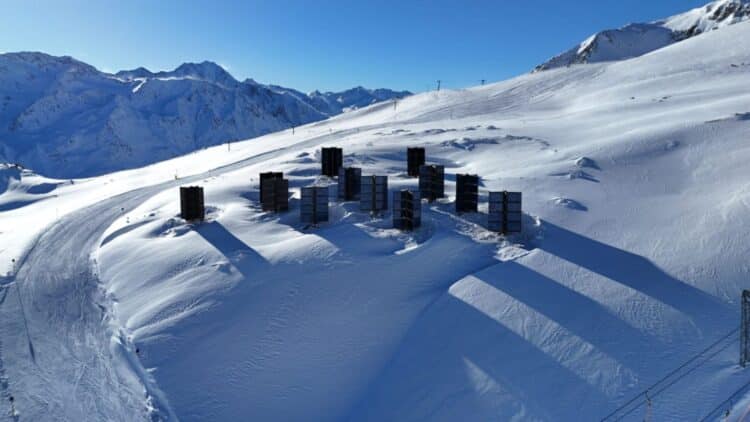Switzerland is closely monitoring and noting the impact of snow on solar panels installed in the Swiss Alps. While traditional solar panels often view snow as a challenge, recent discoveries suggest a different approach. Snow is having a strange and rather powerful effect on solar output. The experiment being conducted in Switzerland is showing what happens when innovation aligns with the climate in an environment.
Sunlight is reflected off the snow and harvested for energy
While it may be somewhat hard to believe that the snow-covered Swiss Alps can be home to solar inventions, snow and harsher weather conditions are not affecting solar output in any way. While excessive snow had long been considered a factor causing trouble for traditional photovoltaic panels, a breakthrough discovery has been made.
As per the discovery by scientists from the Ecole Polytechnique Fédérale de Lausanne (EPFL) and the WSL Institute for Snow and Avalanche Research, snow provides a boosting effect for solar output. When sunlight bounces off the reflective surface of the snow, solar panels tend to receive more radiation.
During these tougher and colder months, photovoltaic panels were found to produce the same or even more output than when the sun is reflecting on panels that are not snow-covered. However, all is not rosy; snow tends to get stuck on the panels and blocks the sunlight completely. To prevent the snow from sticking to the panels, a solution from Austria was needed.
The Austrian solution, all thanks to Austrian engineering excellence
From Austria, the Helioplant was proposed, which is a vertical panel meant specifically for colder climates. Ehoch2 can be considered to be the brains behind such a tree-like structure that stands upright and utilizes wind turbines to prevent the snow from sticking onto the panels.
Swiss engineers joined forces with engineers from Austria for the Gondosolar Project. This Gondosolar Project is underway in the Swiss Alps, where the focus is on advanced computational fluid dynamics (CFD) modeling. The team is making use of tools like the snowbed foam simulation tool, which can track the way that snow falls and melts around these panels. With testing underway, the idea is to capitalize on these panels so that maximum sunlight can be captured. Height and spacing of the panels may very well need to be adjusted to ensure maximal solar capture.
Helioplant is planting the idea of solar forests
The Helioplant captures the idea of combining energy and infrastructure. Being vertical in appearance, the Helioplant resembles trees that fit in perfectly with the landscape. Adding these vertical structures to the environment will cause minimal disruption, reducing operational costs in the process. The introduction of such solar forests is great, as it will result in solar farms meant for the alpine ecosystems.
Solar forests continue generating power even at times when the snowfall is in full swing or even when the snow begins to melt. Since Switzerland has covered the Alps with solar panels, they have achieved something impossible. Now the impossible seems more possible.
The powerful effect created by the snow on solar panels
Inevitably, we can deduce that solar panels can survive even in snow. In fact, snow can make photovoltaic systems even stronger. Thanks to engineers from Austria and researchers from Switzerland, the Swiss Alps are becoming the testing ground for this new solar invention. With mountains becoming locations of solar forests, the route to gaining sustainable energy is becoming much easier. Solar panels are believed to generate power irrespective of the weather, so come sunshine, rain, or snow, solar panels will continue generating power. With the first snowfall of the year covering panels, a strange effect is being produced.
Disclaimer: Our coverage of events affecting companies is purely informative and descriptive. Under no circumstances does it seek to promote an opinion or create a trend, nor can it be taken as investment advice or a recommendation of any kind.


